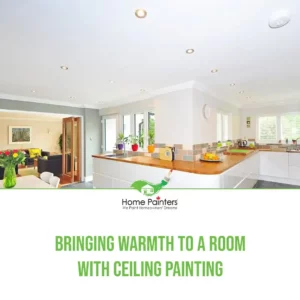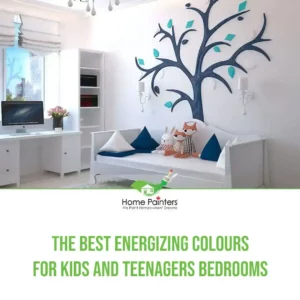
There are usually so many questions involved when it comes to design and interior painting. You have to stop and ask yourself questions about colour and how it will play with other rooms in the house. Are you creating the right mood? Also, before you even start, there’s prepping the area and picking primer as well.
Even further than that, and perhaps most important, is picking the right type of paint. If you don’t pick the right type of paint, it can really throw off the whole process. After all, you’re painting your space for a refresh or redo, so it all needs to fit together seamlessly. Also, picking the wrong paint in the beginning can increase costs in the long term. For example, do you want to stain your bricks or paint them? All of these decisions and factors make a huge difference in the long run. Plus, you want to avoid any re-dos and extra costs altogether! Choose wisely from the very beginning. While going through this thought process with interior painting, there will be a number of questions that will cross your mind. Besides having a colour in mind, this is where you want to think about all the supplies you’re going to need. If you’re not going with the professional painting company route, there’s lots to think about.
The Fundamentals of Interior Paints
Firstly, let’s demystify what makes up the paint on your walls. At its core, interior paint consists of pigments for colour, binders that hold these pigments together, liquid carriers (usually water or oil-based solutions) that make the paint spreadable, and additives that give the paint specific performance characteristics.
Types of Paint Finishes
When it comes to the best paint finish for interior walls, it’s not just about the visual appeal; it’s about selecting a finish that suits the function of each room.
- Flat/Matte: A great ally for walls with minor imperfections, as it does an excellent job of hiding those blemishes. However, it’s less durable when it comes to cleaning. Ideal for less trafficked areas like adult bedrooms and other low-humidity rooms.
- Eggshell: Imagine a soft lustre, like that of a well… eggshell. It’s easier to clean than matte finishes and works well in medium-traffic areas like living rooms.
- Satin: With a velvety sheen, satin finishes are even more cleanable. They’re fit for high-traffic areas or children’s rooms where occasional fingerprints may need to be wiped away.
- Semi-Gloss: Reflective and durable, semi-gloss is a champion in kitchens and bathrooms where moisture resistance and ease of cleaning are paramount.
- High-Gloss: Maximum durability and shine, this is for surfaces that suffer a lot of wear and tear or need to be wiped down often, though it does highlight surface imperfections.
Paint Composition: The Chemistry Of Colour
Interior paints also come in various base formulations, and here’s where functionality really comes into play:
- Water-Based Paints: These are beloved for their ease of use and quick drying time. They have less odour than oil-based paints and have become the norm for most interior applications.
- Oil-Based Paints: Touted for their durability and rich finish, oil-based paints are excellent for trims and mouldings. They take longer to dry and require solvents for clean-up, but their smooth finish is often worth the extra effort.
Paint Composition: The Chemistry Of Colour
Interior paints also come in various base formulations, and here’s where functionality really comes into play:
- Water-Based Paints: These are beloved for their ease of use and quick drying time. They have less odour than oil-based paints and have become the norm for most interior applications.
- Oil-Based Paints: Touted for their durability and rich finish, oil-based paints are excellent for trims and mouldings. They take longer to dry and require solvents for clean-up, but their smooth finish is often worth the extra effort.
Question 1) What Do I Need to Paint My House?
- Your paint of choice
- Don’t forget the primer too!
- Rollers
- Brushes
- Paint roller extension pole
- Drop clothes
- Paint trays
- Sandpaper
- Painter’s tape
If you don’t want to worry about these things, always consider a Toronto painting company like Home Painters Toronto!
Question 2) Interior Painting: What Kind of Paint is Best For a Home?
When it comes to interior painting, the vast majority of professionals will tell you to use latex paint. You can use it on most surfaces—wood, concrete, interior walls and ceilings. It’s water soluble, super durable and offers protection from chipping and breaking. Generally, it also opposes yellowing in spots that are exposed to daylight.
Also, in opposition to oil-based paint, latex dries a great deal faster as well. It’s also less expensive—often by 40%, which is a huge price difference! It doesn’t have a strong odour and can be cleaned quite easily with soap and water, too. Plus, latex paint is also environmentally friendly.
Question 3) How Do I Know What Paint to Get?
You can really use latex paint just about anywhere in your home. In Ontario, some oil-based paints have been widely discouraged and sometimes banned from manufacturers. With that said, there are some instances where oil-based paints could be the way to go for interior painting.
For instance, sometimes oil-based paints work better in high-moisture rooms, like kitchens or bathrooms. Also, due to high traffic and possible scuffing, oil-based paint on wooden stairways could be good. It could be worth it to paint doors and trims with oil-based paint as well. You might find that oil-based paints stand up better, are more durable and are easier to clean on highly used wood surfaces, like trims. Another time to consider oil-based paint is for metal surfaces. A water-soluble paint, like latex, won’t last nearly as long on a metal surface like railings, as an oil-based paint will.
Considerations Before Making Your Selection
Assessing the Use of Your Space
The choice of what type of paint for interior walls isn’t only about aesthetics; consider the function of each space. High-traffic areas or those prone to moisture definitely benefit from more durable, glossier finishes, while bedrooms may call for a cozier, matte look.
Health and Environment
Ventilation concerns or sensitivity to chemicals make choosing paint with low or zero VOC (Volatile Organic Compounds) levels a responsible decision for both indoor air quality and the environment.
Taking a Test Drive
Swatches are your friends. Test your chosen paint colours on large patches of your wall to see how the light throughout the day interacts with your selection.
Interior Painting: Top Tips
We hope that we’ve helped clear up any of those crucial questions that you ask yourself before painting a house interior. There are so many things to consider when thinking about what kind of paint is best for your home. As a professional paint company that has been in business for over 36 years, we stick with our tried and true brands.
For us, that’s always Benjamin Moore and Behr. We always have the utmost concern about quality, smoothness and durability. And these two brands deliver on our interior painting needs, time and time again. Be sure to use a good primer before starting your paint job as well. Benjamin Moore’s Fresh Start Latex Primer is a good one. If you’re in need of some interior painting inspiration, head over to our Pinterest page!
More Interesting Blogs Related to
“Interior Painting: Picking The Right Type”
Of course, if you aren’t feeling up to the extra work, why not let Home Painters Toronto take a load off your back? With over 36 years of experience in home renovations, call us NOW at 416.494.9095, or email us at [email protected] to get a FREE estimate for your interior painting project and consultation about what paint to choose. And don’t forget to follow us on all our social channels below!





